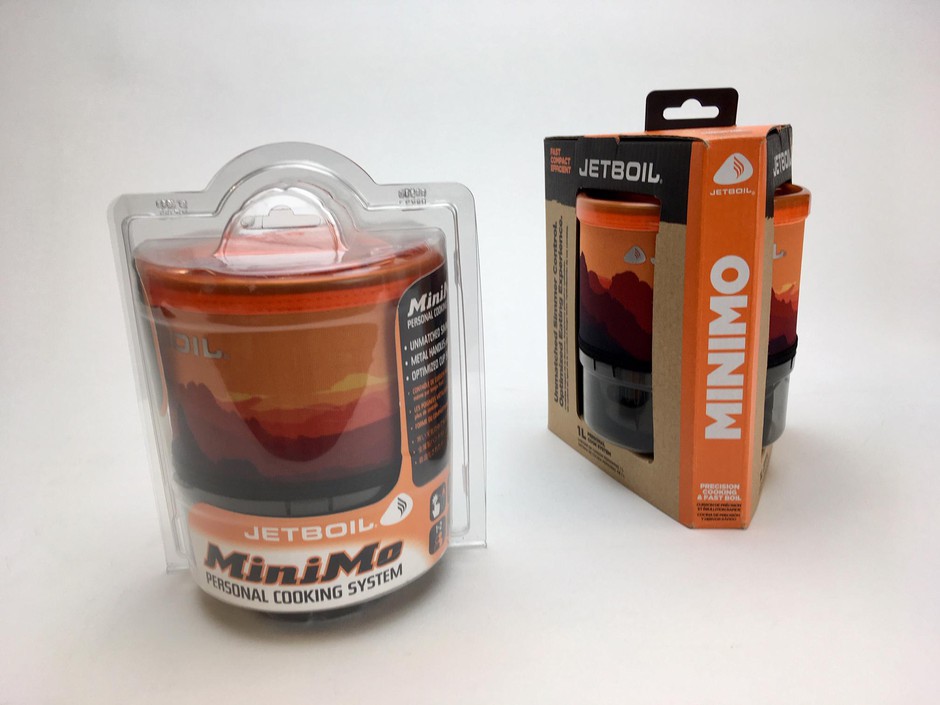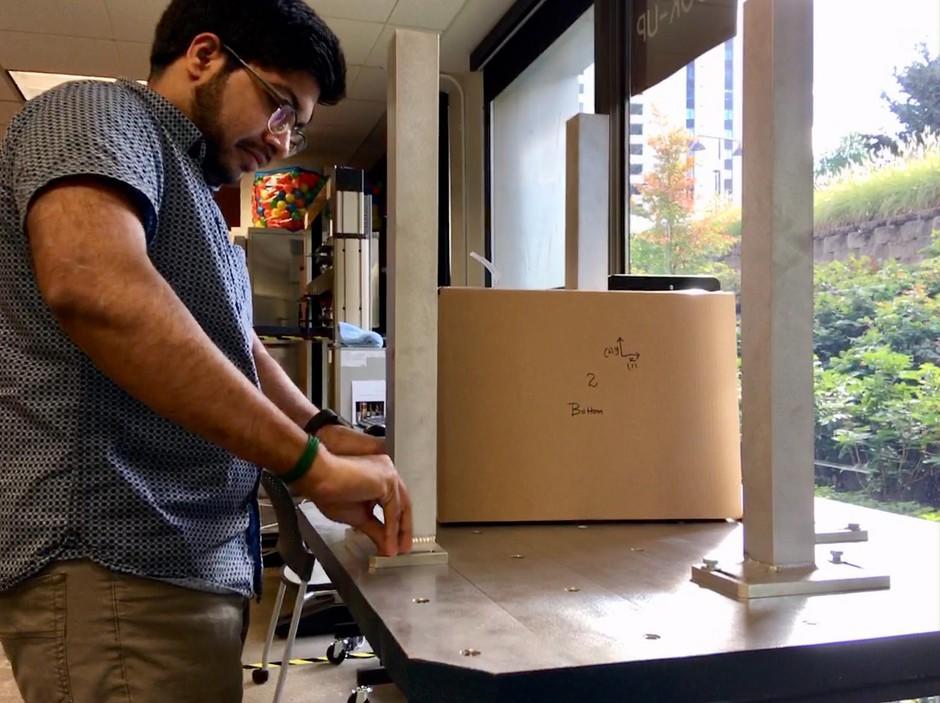“Basically anything we create — any design we’re looking to validate – we cut out with this machine,” he said. “This lets us know if we’re on the right track or on a fool’s errand.”
When it’s done, he folds the resulting cut-out into a three-dimensional shape that fits perfectly around the edge of a laptop. It’s designed to replace the plastic foam end caps companies use to ship computers.
Gaither says inventions like this are helping the company build a growing customer list.
“I think now people are more concerned about the impact plastics are having on the environment,” he said. “Paper packaging is a much more renewable resource. It biodegrades.”
A growing number of campaigns to ban plastic waste are putting pressure on companies to find alternatives – not just for straws, but for all kinds of plastic packaging.
Years ago, the Swedish paper company BillerudKorsnäs acquired a Portland packaging company called Paccess. Their office in Southwest Portland is now a lab where engineers redesign packaging and test out paper products they can sell into a budding market for plastic replacements.
Their customers are now using cardboard in place of clear plastic packaging for camping gear. They’re using paper bags instead of plastic ones for food like pasta. The company is even working on a paper soda bottle.
Moonshot
Tor Lundqvist, head of the Americas division of BillerudKorsnäs, calls this paper bottle initiative a “fly to the moon kind of thing.”
The company prides itself on its sustainably managed forests. And it has a secret process for making super-strong paper products.
“We can use these products in solutions where they can actually push out plastic for plastic bags, for instance, or plastic trays and even plastic boxes,” Lundqvist said.
Any time you replace plastic with paper, he said, it does more than reduce plastic pollution. It also helps with climate change because plastic is made from fossil fuels while the trees used to make paper actually absorb heat-trapping carbon dioxide from the atmosphere.
But making a beverage bottle out of paper is pushing the company to go even further in its mission to challenge conventional packaging.
“Our CEO wanted us to do something really difficult with our raw material that people thought was not possible to do,” said Lundqvist. “It’s going very well. It looks like we are going to have a product on the market in the near future.”
A promotional video on the project shows the process the company is going through to create the paper bottle and test its durability with the Danish packaging company ecoXpac.

The problem with paper
Critics say paper packaging isn’t always as sustainable as it looks. The real challenge for BillerudKorsnäs, they say, will be making sure the company’s paper bottle is easily recyclable or biodegradable.
Conrad MacKerron, who works for As You Sow — a nonprofit that is teaming up with investors and pushing big manufacturers to change their plastic packaging — has heard about the BillerudKorsnäs paper bottle project, and he says he doubts the company can create a leak-proof bottle purely out of paper.
“The devil’s in the details,” he said. “Paper cups – in general we think of them as recyclable, but because of the thin plastic lining a lot of paper mills cannot process them. So they reject the cups, and they go to landfills.”
According to BillerudKorsnäs, the first version of its paper bottle will be released in 2019 and it will have a plastic barrier inside. However, the company is also planning to release two more versions over the next five years. The second version will have a bio-based barrier inside, the company says, and a third version will be biodegradable.
MacKerron said a lot of big companies have finally started taking the problem of plastic pollution seriously within the last year.
“I think most companies were hoping this concern about plastic pollution would blow over,” he said. “That tune has changed because people are so appalled and offended at how bits of plastic are now just everywhere.”
Scientists say the world is sending 8 million tons of plastic into the oceans every year, and it never really goes away. It’s killing fish, seabirds and turtles, and it’s even showing up in our food and drinking water.
“I think the sense that it’s become pervasive is what can turn the tide and come up with perhaps radical solutions that were not thinkable three, four, five years ago,” MacKerron said.
This fall, thousands of volunteers in the Pacific Northwest and across the world picked up trash and tallied up the plastic they found. The groups that organized the cleanup are now calling on the top manufacturers of that plastic to replace their packaging.
Can the paper match the plastic?
Meanwhile, BillerudKorsnäs is seeing 25 percent revenue growth year after year.
At the company’s lab in Portland, designers slide the laptop with paper end caps into a box and test it to see if the paper can match the protective power of plastic.
First, they place it onto a mechanical arm that drops it from three feet off the ground. Then, they strap it into a shaking machine that mimics the bumps on a delivery truck. Finally, a third machine squeezes it between two metal arms.
During each test, designers measure the impact to the laptop, and so far it looks like the paper is holding up. There are no dents in the box and no damage to the laptop inside. That could one day mean more customers for the company, and more laptops getting shipped in plastic-free packaging.



